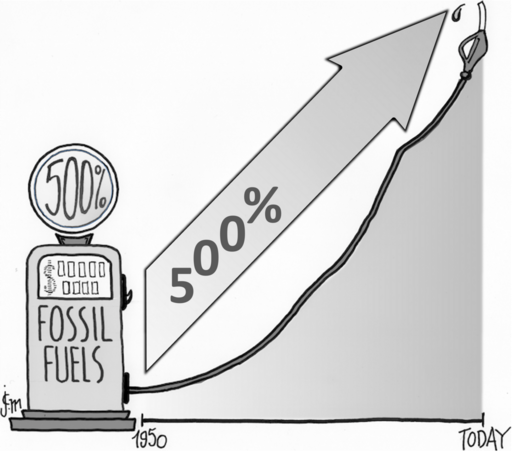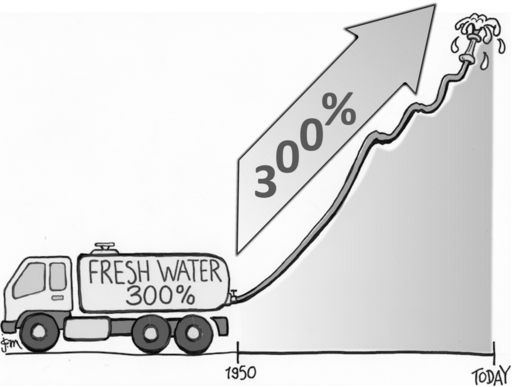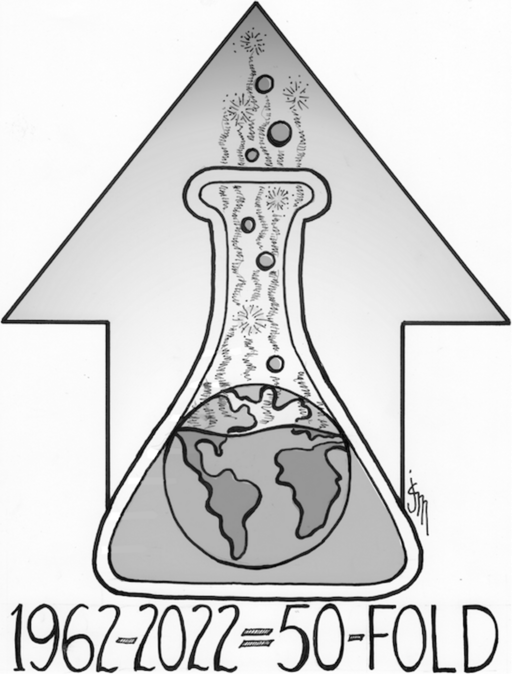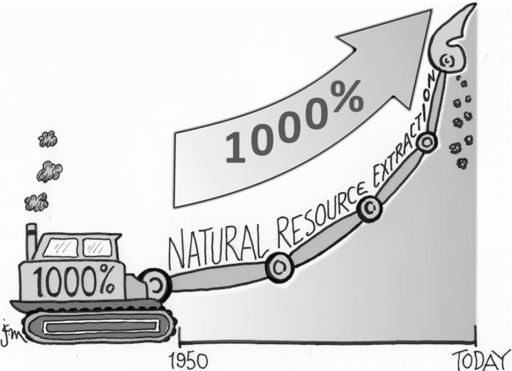The Baby Boom was actually not isolated to the US and instead part of a global population increase. We reached one billion people around 1804, two billion in 1927, three in 1960, four in 1975, five in 1987 and six in 19992. The current world population is over eight billion. These jumps are happening faster than ever, with each increment coming in shorter duration from the last.
The Great Acceleration is a term used to define the planetary implications of this rapid population growth; it shows many of the human contributions to climate change since 1950. A higher population means that more people - especially those in affluent countries - generate significant demand for basic amenities, like electricity and water, as well as consumer goods. The Great Acceleration therefore marks a takeoff point from which human impact can be measured.
Earth’s resources are limited, yet the demand for them is consistently increasing. We therefore require more and more extraction of natural elements, plus their processing, to house, feed, clothe and entertain the world’s population.
Resource extraction is defined as any activity withdrawing natural materials from the Earth. We as humans extract resources in a number of ways: via forestry, mining, fishing, plus oil and gas production. We use these resources for making everything from toilet paper to computers.
Swedish environmental scientist Johan Rockström puts numbers to the Great Acceleration trends in his book, Breaking Boundaries: The Science of our Planet3, co-authored by science journalist Owen Gaffney. Their findings are staggering:
Fossil fuel usage is up over 500% since 1950. Fossil fuels are coal, oil and gas: all contributors to climate change. They are used for transportation and energy production, including heating and cooling.

Fishing, on a commercial scale, provides food to much of the world. Yet commercial fisheries have removed more than 33% of seafood from global coastal waters since 19506.
Of course, we also use more electricity than ever before, in homes, businesses and industry. We also use more fresh water, which is up over 300% since 1950.


